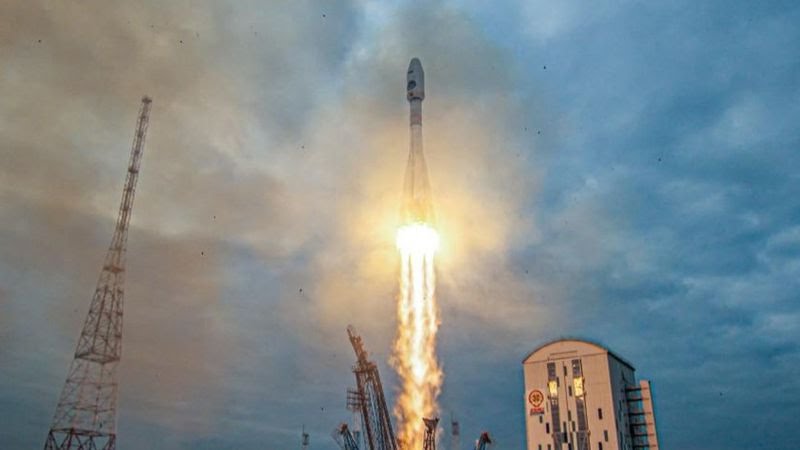
News
Russia’s Luna-25 Crashes Into the Moon After Losing Control

Russia’s first lunar mission in nearly half a century ended in disaster as the Luna-25 spacecraft crashed into the Moon’s surface on Saturday, according to Roskosmos, the state space corporation.
What went wrong with Luna-25?
The Luna-25 spacecraft was launched from the Vostochny Cosmodrome in far-east Russia on August 11, 2023, with the aim of landing on the Moon’s south pole, a region that has never been explored by any country before.

The south pole of the Moon is of great scientific interest because it is thought to contain frozen water and other valuable resources that could support future human settlements.
The spacecraft was supposed to make a soft landing on Monday, August 21, after performing a series of maneuvers to enter a pre-landing orbit around the Moon.
However, something went wrong during the final phase of the descent, and the spacecraft lost contact with Earth at 14:57pm (11:57 GMT) on Saturday, August 19.

Roskosmos said in a statement that the spacecraft “moved into an unpredictable orbit and ceased to exist as a result of a collision with the surface of the Moon.”
The exact cause of the failure is still unknown, but some experts have suggested that the spacecraft may have been affected by dust or debris from previous lunar missions, or by irregularities in the Moon’s gravity field.
READ ALSO: Binance Connect to Cease Operations on August 16: See Why
How does this affect Russia’s space ambitions?
The Luna-25 crash is a major setback for Russia’s space program, which has been struggling to keep up with its rivals in recent years.
Russia was once a pioneer in lunar exploration, sending the first probes and rovers to the Moon in the 1960s and 1970s.
However, it has not launched a lunar mission since Luna-24 in 1976, which returned soil samples from the Moon.
Since then, Russia has focused more on orbital and manned missions, while other countries such as the US, China, India, Japan and Israel have advanced their lunar exploration efforts.
Russia had planned to revive its lunar program with a series of missions under the Luna-Glob project, which aimed to study the Moon’s geology, chemistry and environment.
Luna-25 was supposed to be the first of these missions, followed by Luna-26, an orbiter, and Luna-27, a lander and rover.
The failure of Luna-25 may delay or jeopardize these future missions, as well as Russia’s long-term goal of establishing a permanent base on the Moon by 2030.
Who else is competing for the Moon’s south pole?
Russia is not the only country that has set its sights on the Moon’s south pole.
India is also preparing to launch its Chandrayaan-3 mission next week, which will attempt to land a rover near the south pole.
India’s previous mission, Chandrayaan-2, failed to land on the Moon in 2019 due to a technical glitch.
If successful, Chandrayaan-3 will make India the fourth country to achieve a soft landing on the Moon, after the US, China and Russia.
The US and China are also planning to send more missions to the Moon’s south pole in the coming years.
The US plans to send astronauts to the south pole by 2024 under its Artemis program, which aims to establish a sustainable human presence on the Moon.
China plans to send its Chang’e-6 mission to collect samples from the south pole by 2024, followed by Chang’e-7 and Chang’e-8 missions that will explore and test technologies for building a lunar research station.
The race for the Moon’s south pole is heating up as more countries recognize its scientific and strategic value.
However, it is also fraught with challenges and risks, as demonstrated by Russia’s Luna-25 crash.













